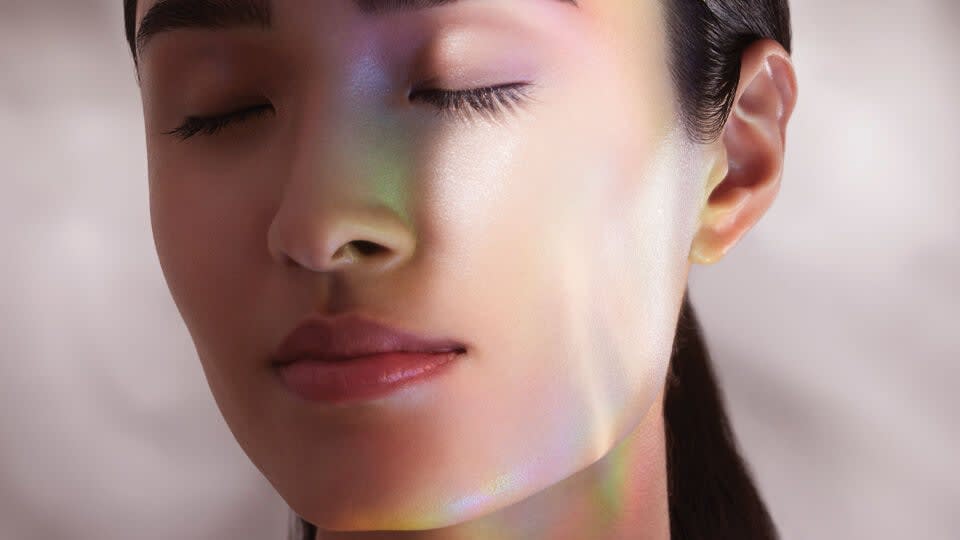Sleep is good for our body and mind, but it could also be aging your skin without you knowing. Read on to see if you might be suffering from “sleep wrinkles”—and find out how to banish them.

It’s highly possible, if you’re reading this, that you already have a nighttime beauty routine. Maybe it starts with a thorough cleanse, and involves a treatment serum, like a retinol or vitamin C—something that improves your skin throughout the night so you wake up fresh and glowy. But have you considered the elements of your evening regimen beyond the products you use?
Experts from dermatologists to beauty editors recognize the importance of overnight skincare. When we sleep, our bodies enter a state of repair. While our skin naturally rebuilds and restores itself, there are choices we can make that will help maximize this time. And there are some skin issues that can be remedied by making simple changes to one’s sleeping routine.
Sleep wrinkles are a great example. There are choices you could make today that may help you prevent sleep wrinkles in the future. Here’s how.
What Are Wrinkles, Really?
At the microscopic level, the human skin system is a dazzling mosaic of barrier cells. You can imagine the contents as mostly collagen, the body’s main structural protein, along with elastin, other proteins that help give skin its bouncy quality. Natural processes like aging or oxidative stress cause these proteins to break down throughout our lives, changing the structure of the skin and causing wrinkles, among other things.
In contrast to other skin issues, wrinkles are totally harmless—they are the evidence of a life well lived, and their appearance is rarely, if ever, an indication of poor skin health. Still, wrinkles are often the target of our skincare attention. While wrinkles can be minimized, or their appearance improved on, they cannot be ironed away. Once they form, they are yours forever. This is why the best treatment for wrinkles involves prevention. Dermatologists at the Cleveland Clinic, for example, recommend a variety of courses for improving upon wrinkles, from active topical products to injectables to surgery. But there are also much simpler, less invasive prevention measures you can take at home, especially when it comes to sleep wrinkles.
How Sleep Wrinkles Form
Wrinkles are an inevitability, forming as we age due to the breakdown of collagen and elastin proteins in the skin. Wrinkles also form in response to physical stress, like rubbing and tugging skin on the face, “not at all dissimilar to repeatedly folding and unfolding a piece of paper until it is permanently scored” the plastic surgeon Gerald Imber wrote.
Sleep wrinkles, then, are usually caused by the way skin on the face folds when you’re asleep—smushed up against the surface of a pillow, for example. An article in the Aesthetic Surgery Journal termed this “facial distortion.” Unlike wrinkles caused by aging, sleep wrinkles and lines are caused by external forces—how you place your face on your pillow at night—and tend to appear near the retaining ligaments of the face, along the outer cheeks, eyes, and forehead.
Repeatedly sleeping in the same position, like folding a piece of paper along the same line every night, may cause wrinkles to deepen over time. But as easy as it is to become aware of sleep wrinkle-forming habits, it’s just as easy to start taking steps to avoid them.
How to Prevent Sleep Wrinkles
There are many ways to prevent sleep wrinkles from forming. Some approaches are much simpler than others, but all can be effective if performed consistently.
1. Sleep on your back. Changing one’s sleeping position can greatly help prevent the formation of sleep wrinkles. If you don’t sleep on your face, you avoid the problem entirely. However, a story in Harper’s Bazaar points out that those with sleep apnea, back pain, or who are pregnant, are advised against sleeping on their backs. If this is you, worry not; there are other ways you can prevent sleep wrinkles.
2. Switch to softer sheets. Fabrics like cotton and linen might feel soft to the touch, but they can also draw moisture from the skin, and pull or tug on your face as you toss and turn in the night. For this reason, silk pillowcases are often recommended as anti-sleep wrinkle bedding—they’re proven to reduce skin friction while you sleep.
3. Consider wrinkle-treating injectables. The ubiquity of Botox injections and dermal fillers cannot be denied. And while lots of people opt for injectable solutions to immediate problems—from thin lips to TMJ—they can also be useful preventatives. Anybody familiar with the “freezing” effects of Botox understands how inhibited facial movement means fewer facial distortions, or “folds of the paper.” Dermal fillers, which aim to plump the skin, can also help lines from deepening if they are strategically placed. (Before you consider any facial injections, it’s a good idea to chat with your dermatologist first.)
4. Use active skincare. Many skin products can help manage and even prevent sleep wrinkles in the long run. Try a chemical exfoliant made with alpha or beta hydroxy acids, like Tatcha’s The Texture Tonic, which can help minimize the appearance of sleep wrinkles. Another recommendation is a retinol or a retinol alternative, which feeds skin the building blocks of collagen.
5. Use hydrating skincare. Creamy, moisturizing textures can help plump the skin and make it that much more challenging for wrinkles to develop. Tatcha’s The Silk Serum showed an improvement in the look of lines and wrinkles in 85% of users, according to a clinical study. That might help you sleep better—and smoother—at night.

